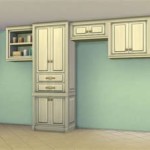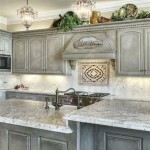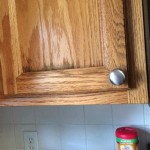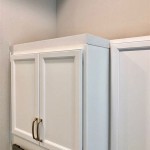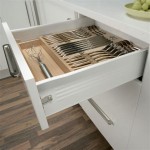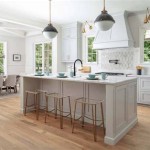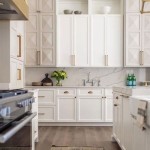How to Build Rustic Kitchen Cabinets
Rustic kitchen cabinets evoke a sense of warmth, character, and connection to nature. Their inherent imperfections and handcrafted appearance lend a unique charm to any kitchen space. Building rustic kitchen cabinets is a rewarding project for both experienced woodworkers and ambitious beginners. This article provides a comprehensive guide to constructing cabinets that embody the rustic aesthetic, covering design considerations, material selection, construction techniques, and finishing methods.
Planning and Design
Before commencing any construction, careful planning and design are essential. This initial stage involves determining the cabinet dimensions, style, and layout of the kitchen. Consider the existing space, available appliances, and desired storage capacity when designing the cabinets.
Cabinet Dimensions: Standard base cabinet height is typically 34.5 inches, allowing for a 1.5-inch countertop thickness to reach the standard counter height of 36 inches. Base cabinet depth is generally 24 inches, providing ample space for storing cookware and other kitchen essentials. Wall cabinets typically have a depth of 12 inches. The height of wall cabinets can vary depending on ceiling height and personal preference, but common heights range from 30 to 42 inches.
Cabinet Style: Rustic cabinets often feature simple, unadorned designs. Shaker-style doors, with their clean lines and recessed panels, are a popular choice for rustic kitchens. Raised panel doors can also be used, but the profiles should be relatively simple and unornamented. Avoid intricate carvings or overly decorative hardware, as these can detract from the rustic aesthetic. Consider incorporating open shelving into the design to display dishes and other decorative items.
Kitchen Layout: The layout of the kitchen should be carefully considered to maximize efficiency and functionality. Common kitchen layouts include the U-shaped, L-shaped, galley, and island layouts. The "work triangle," which connects the sink, refrigerator, and stovetop, should be optimized to minimize steps and create an efficient workspace. Consider the placement of appliances and the flow of traffic through the kitchen when designing the layout.
Creating a Detailed Plan: Once the desired style and dimensions are determined, a detailed plan should be created. This plan should include accurate measurements, detailed drawings of each cabinet component, and a list of all materials required. Using a computer-aided design (CAD) program can be helpful for creating professional-looking plans. Alternatively, hand-drawn sketches can be used, provided they are accurate and clearly labeled. This planning stage will save time and money in the long run by minimizing errors and ensuring that all materials are readily available.
Material Selection
The choice of materials is crucial for achieving the desired rustic look. Wood is the primary material used for building rustic kitchen cabinets, and several species are well-suited for this style. The hardware also plays a significant role in completing the rustic aesthetic.
Wood Species: Commonly used woods for rustic cabinets include pine, oak, hickory, and alder. Pine is a relatively soft and inexpensive wood that is easy to work with. It often features knots and other imperfections that enhance its rustic character. Oak is a hardwood that is known for its durability and distinctive grain pattern. Hickory is an even harder wood that is highly durable and resistant to wear. Alder is a softer hardwood that is often used as a substitute for cherry or maple. It has a fine, even grain and takes stain well.
Plywood and Other Materials: While solid wood is often used for cabinet doors and face frames, plywood is a more cost-effective and stable option for cabinet boxes. Birch plywood is a good choice for cabinet boxes because it is strong, durable, and relatively inexpensive. It is essential to select a plywood grade that is appropriate for cabinet construction. Avoid using lower-grade plywood that may have voids or imperfections. Other materials that may be used in cabinet construction include screws, nails, wood glue, and sandpaper.
Hardware: Hardware plays a significant role in achieving the rustic aesthetic. Black iron hinges, pulls, and knobs are a popular choice. These hardware items often have a hand-forged look that complements the rustic style. Pewter or bronze hardware can also be used. Avoid using overly modern or polished hardware, as these can detract from the rustic character of the cabinets. Consider using exposed hinges to enhance the rustic look. These hinges are mounted on the outside of the cabinet door and add a touch of visual interest.
Sourcing Materials: Materials can be sourced from local lumberyards, home improvement stores, or online retailers. It is important to carefully inspect all materials before purchasing them to ensure that they are of high quality and free from defects. When selecting lumber, pay attention to the grain pattern and the presence of knots. For rustic cabinets, knots and other imperfections are often desirable, as they add to the character of the wood.
Construction Techniques
Constructing rustic kitchen cabinets requires a combination of basic woodworking skills and attention to detail. The key is to build solid and functional cabinets while preserving the unique characteristics of the materials.
Building the Cabinet Boxes: The cabinet boxes are typically constructed from plywood. The sides, top, bottom, and back of the cabinet box are cut to the appropriate dimensions and assembled using screws, nails, and wood glue. Ensure that the cabinet box is square and level before proceeding to the next step. A square cabinet box is essential for proper door alignment and smooth operation.
Constructing Face Frames: Face frames are typically constructed from solid wood. The face frame is attached to the front of the cabinet box and provides a solid surface for mounting the doors and drawers. The face frame is typically constructed using mortise and tenon joints, dowel joints, or pocket hole joints. Mortise and tenon joints are the strongest type of joint, but they require more skill and precision to construct. Dowel joints are easier to construct than mortise and tenon joints, but they are not as strong. Pocket hole joints are the easiest type of joint to construct, but they are not as strong as mortise and tenon joints or dowel joints.
Building Doors and Drawers: Cabinet doors are typically constructed from solid wood or plywood. Shaker-style doors are a popular choice for rustic kitchens. These doors feature a flat panel surrounded by a frame. The frame can be constructed using mortise and tenon joints, dowel joints, or pocket hole joints. The panel can be constructed from plywood or solid wood. Drawer boxes are typically constructed from plywood. The drawer box sides are attached to the drawer box front and back using dovetail joints, rabbet joints, or butt joints. Dovetail joints are the strongest type of joint, but they require more skill and precision to construct. Rabbet joints are easier to construct than dovetail joints, but they are not as strong. Butt joints are the easiest type of joint to construct, but they are not as strong as dovetail joints or rabbet joints.
Assembly and Installation: Once the cabinet boxes, face frames, doors, and drawers are constructed, they can be assembled. The face frames are attached to the cabinet boxes using screws and wood glue. The doors are attached to the face frames using hinges. The drawers are installed using drawer slides. The cabinets are then installed in the kitchen. The cabinets should be level and securely attached to the wall. Shim cabinets as needed to achieve a level surface. Fasten toe kicks and molding to add the finishing touches.
Finishing Techniques
The finishing process is critical for achieving the desired rustic look. A variety of techniques can be used to enhance the wood's natural grain and create a weathered appearance.
Sanding and Preparation: Before applying any finish, the wood surface must be properly sanded. Start with a coarser grit sandpaper (e.g., 80-grit) to remove any imperfections and then gradually work your way up to a finer grit sandpaper (e.g., 220-grit). Sand with the grain of the wood to avoid leaving scratches. After sanding, remove all dust and debris from the surface using a tack cloth or a vacuum cleaner. This step will help ensure a smooth and even finish.
Staining: Staining is a popular way to enhance the wood's natural grain and add color to the cabinets. Choose a stain color that complements the overall aesthetic of the kitchen. Darker stains, such as walnut or mahogany, can create a warm and inviting feel. Lighter stains, such as oak or pine, can create a more airy and casual feel. Apply the stain evenly using a brush, rag, or sprayer. Follow the manufacturer's instructions for application and drying times. After the stain has dried, apply a second coat if necessary to achieve the desired color intensity.
Distressing: Distressing is a technique used to create a weathered or aged look. This can be achieved by using a variety of methods, such as sanding the edges and corners of the cabinets to expose the raw wood. Another technique is to use a hammer or other tool to create dents and scratches in the wood. You can also use a wire brush to remove some of the softer wood grain, creating a textured surface. Experiment with different distressing techniques to achieve the desired look.
Sealing and Topcoat: After staining and distressing, it is important to seal the wood to protect it from moisture and wear. Apply a clear sealant, such as polyurethane or varnish. These sealants will create a durable and water-resistant finish. Apply several coats of sealant, allowing each coat to dry completely before applying the next. After the sealant has dried, apply a topcoat to protect the sealant and provide a smooth, durable surface. Choose a topcoat that is appropriate for kitchen cabinets. Consider a matte or satin finish to maintain the rustic aesthetic. Avoid using high-gloss finishes, as these can detract from the rustic character of the cabinets.

21 Diy Kitchen Cabinets Ideas Plans That Are Easy To Build Cupboards Farmhouse

How To Build Rustic Cabinet Doors Concord Carpenter

Diy Budget Open Kitchen Cabinets Build Your Own In A Weekend

Diy Rustic Farmhouse Kitchen Island Rocky Hedge Farm

Diy Budget Open Kitchen Cabinets Build Your Own In A Weekend

Nice 125 Modern Rustic Farmhouse Kitchen Cabinets Ideas Https Moodecor Co 1014 Open

27 Gorgeous Rustic Kitchen Cabinets Ideas To Build This Year

Diy Rustic Industrial Cabinet Doors Tutorial Cherished Bliss

Diy Budget Open Kitchen Cabinets Build Your Own In A Weekend

Buy Hand Crafted Reclaimed Rustic Kitchen Cabinets Made To Order From Heartland Woodworking And Furniture Custommade Com
Related Posts


